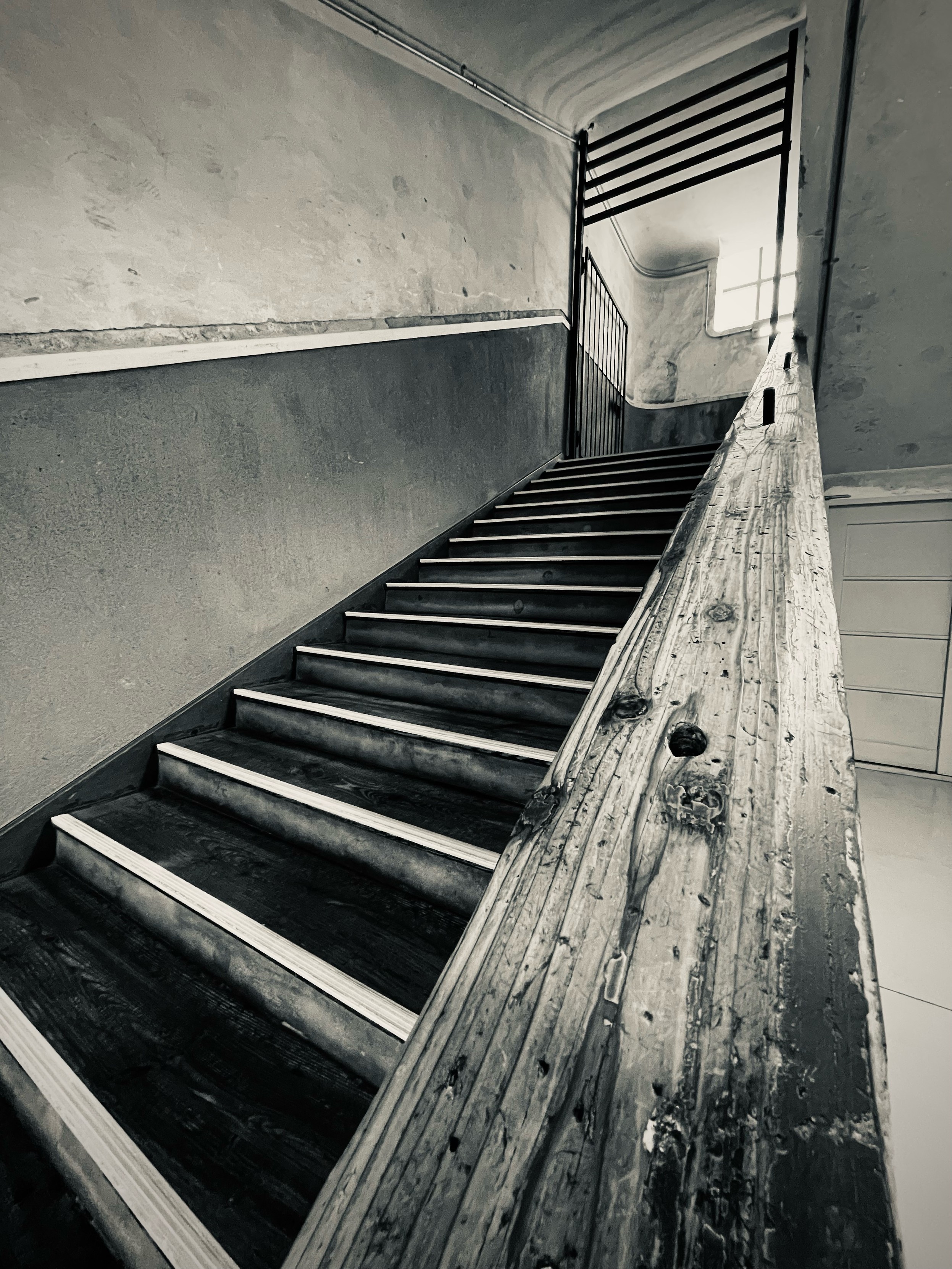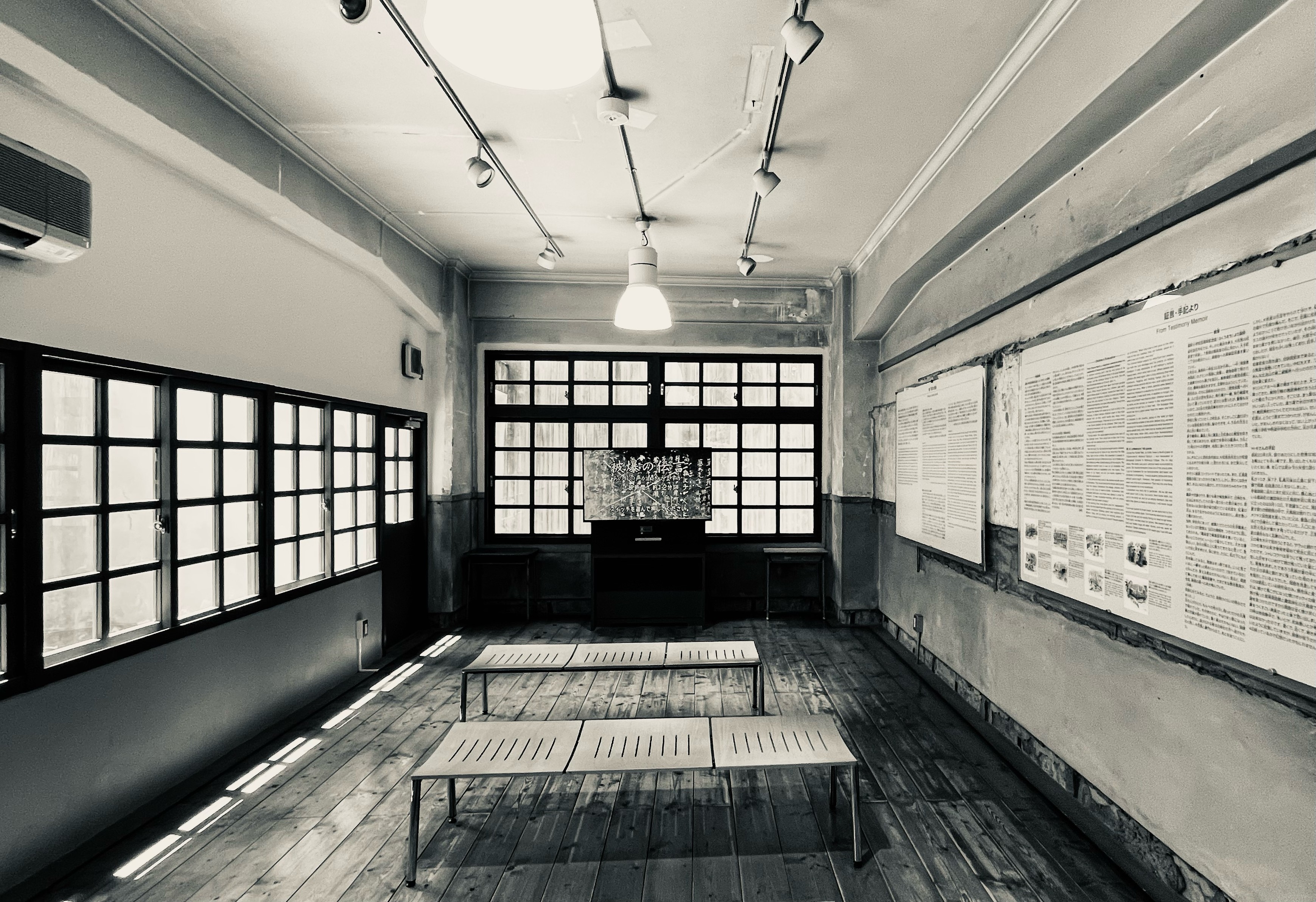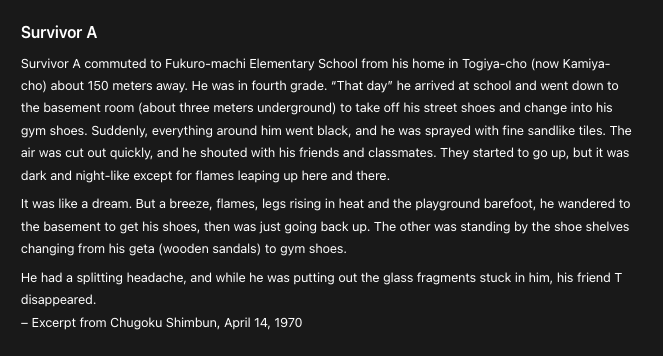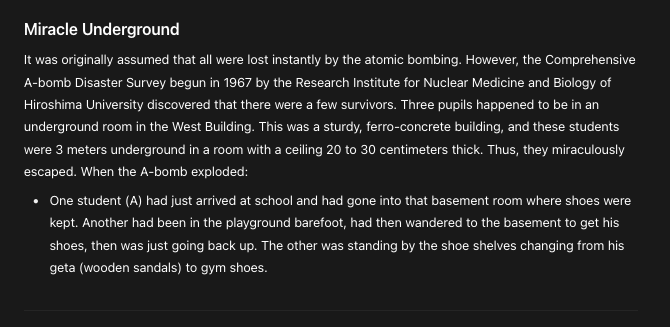A year after Nihon Hidankyo won the Nobel Peace Prize, one high school student remains determined to pursue the abolition of nuclear weapons. https://www.japantimes.co.jp/news/2025/10/12/japan/japan-high-school-student-nuke-abolition-call/?utm_medium=Social&utm_source=mastodon #japan #hiroshima #atomicbombings #nuclearweapons #nihonhidankyo #nobelpeaceprize
For atomic bomb survivor Koko Kondo, an unexpected meeting with the co-pilot of the Enola Gay bomber that dropped the bomb on Hiroshima in 1945 helped replace her anger with forgiveness. https://www.japantimes.co.jp/news/2025/08/12/japan/history/this-is-your-life-kondo/?utm_medium=Social&utm_source=mastodon #japan #history #wwii #hiroshima #atomicbombings #nuclearweapons #hibakusha
Terumi Tanaka, a 93-year-old survivor of the Nagasaki atomic bombing, has called on younger generations to create a movement for the abolition of nuclear weapons that "inspires others." https://www.japantimes.co.jp/news/2025/08/10/japan/nagasaki-a-bomb-hibakusha-movement/?utm_medium=Social&utm_source=mastodon #japan #atomicbomings #nagasaki #hiroshima #wwii #nuclearweapons #terumitanaka #hibakusha
Nagasaki marked 80 years since the U.S. atomic bombing of the city on Saturday, amid frustration among the dwindling number of survivors that their powerful calls for eradicating nuclear arms are falling on deaf ears. https://www.japantimes.co.jp/news/2025/08/09/japan/nagasaki-80th-anniversary-atomic-bombing/?utm_medium=Social&utm_source=mastodon #japan #nagasaki #atomicbombings #wwii #history #hibakusha
This nonprofit is fighting to preserve ‘survivor’ trees from Hiroshima’s atomic bombing — and share their seeds with the world. https://www.japantimes.co.jp/community/2025/08/09/issues/green-legacy-hiroshima-atomic-bomb-trees/?utm_medium=Social&utm_source=mastodon #community #issues #hiroshima #hibakusha #nagasaki #atomicbombings #nuclearweapons #wwii #unitednations
The mayor of Nagasaki is set to urge world leaders to work toward abolishing nuclear weapons in a speech on Aug. 9 at a ceremony to commemorate the 80th anniversary of the U.S. atomic bombing of the city. https://www.japantimes.co.jp/news/2025/08/01/japan/nagasaki-mayor-nuclear-abolition/?utm_medium=Social&utm_source=mastodon #japan #nagasaki #atomicbombings #nuclearweapons #us #wwii #hibakusha
While walking through Hiroshima we discovered an annex of the Peace Museum - the Fukuromachi School Building.
It is only 400 meters from the hypocenter of the explosion, but the reinforced concrete wing of the building withstood the shockwave, although everything burnable was carbonized instantly.
It was thought that nobody had survived there, but three students had been late changing shoes in a basement room.
They survived while nearly everyone they knew was killed that day 80 years ago.



After visiting the cities of Hiroshima and Nagasaki, Norwegian Nobel Committee chair Jorgen Frydnes emphasized that the testimonies of hibakusha will bring changes to the world. https://www.japantimes.co.jp/news/2025/07/29/japan/nobel-chair-hibakusha-stories/?utm_medium=Social&utm_source=mastodon #japan #nobelprize #hibakusha #hiroshima #nagasaki #atomicbombings #us #nuclearweapons #wwii
Norwegian Nobel Committee chair Jorgen Frydnes has spoken of the need to listen to the voices of hibakusha, who survived the 1945 atomic bombings of Hiroshima and Nagasaki. https://www.japantimes.co.jp/news/2025/07/28/japan/nobel-committee-chair-highlights-need-to-hear-hibakusha-voices/?utm_medium=Social&utm_source=mastodon #japan #nobelprize #hibakusha #hiroshima #nagasaki #atomicbombings
![Survivor O
I believe we had summer vacation that year. August 6, 1945, was Monday. We used to sing an old song that said, “Monday, Monday, Tuesday, Wednesday, Thursday, Friday, Friday.” And that was just how it was: it was even true for elementary school students. In the name of “student mobilization” we had to constantly work alongside and assist adults. Those in 3rd to 6th grades were helping with demolition. That meant we were helping to remove or disassemble wood from a building. The 2nd grade was helping the younger students go below during an air raid; the wooden buildings would be burned quickly. So everyone was in a group, and the 2nd grade was helping the others to go down to the building’s basement.
(After the bombing) When I came up from the basement and out into the playground, the air was full of an odd smell and there should have been a blue sky, but there wasn’t. I saw the rising black smoke and soot from the blast hanging in the air, but I think quite a bit of time passed. The buildings on the west side of the school were completely gone. I couldn’t see anyone clearly, though there were shadows moving. Everyone seemed to be crawling, or leaping up. Toward the rear gate near the wooden school building were the bodies of what I think were [telecom company] service guards. I waved them off without flames. (The fire from the explosion) then picked up my untouched wet shoes. The people in the playground might have been burned up instantly. I don’t know.](https://media.mstdn.social/media_attachments/files/114/950/670/798/476/314/original/704b4206af868dbe.png)


